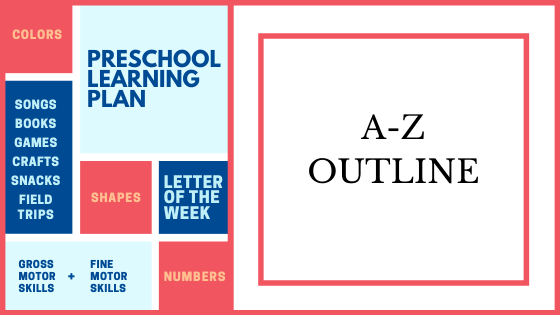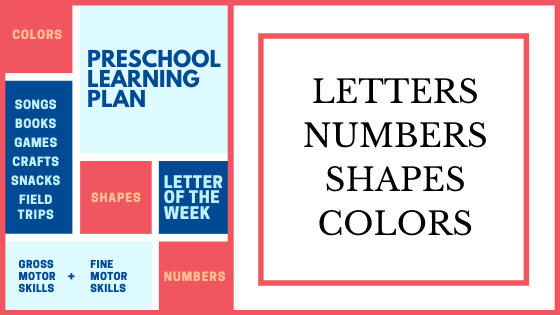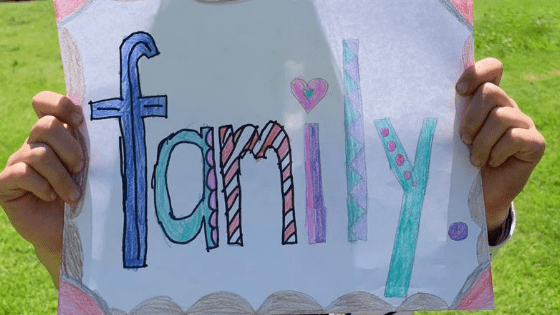This preschool letter-of-the week plan was created to provide my kids, and myself, with some direction and structure for learning during the preschool years.
First, let me say that I was not attempting to make sure my children learned this material in any given period of time. The intent was to expose them to a lot of information and ideas, and allow them to play and have fun while learning.
Second, mamas please…give yourself a break. The most important thing you can do for your preschooler is engage with them directly. Read with them, play with them, listen to music with them, dance with them, even watch a movie with them! But you can absolutely incorporate learning activities in a fun, playful way. They are eager to learn. For me, having a plan and schedule for preschool learning helped provide some order and routine to our days.
Slipper School
We called our preschool “Slipper School” because it was in our house and we could wear our slippers. I can’t even remember how the name came to be, but it was my 4-year old who christened it “Slipper School” one day, and it stuck! So many sweet memories of Slipper School…
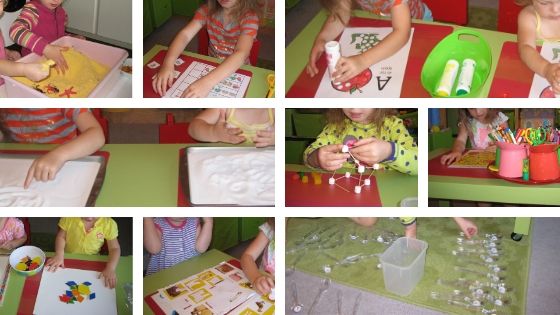
Preschool Letter of the Week Overview
I spent a lot of time researching all kinds of learning programs and curriculum. After hours and hours of poring over material, I decided to create my own general learning plan, and curated many resources from online and printed material. Below, I’m sharing the overview of my preschool learning plan. Links to every letter are available on my Letter of the Week Preschool Page.
Visit my Preschool Letter-of-the-Week Page to find the complete list of A-Z weekly themes
Areas of Learning
- Alphabet
- Topic that could be related to the letter of the week
- Numbers
- Colors
- Shapes
- Reading
- Movement
- Art
- Music
- Field Trips

Alphabet
I followed a “Letter of the Week” plan. Each week we focused on recognizing that letter, learning the sound of the letter, and practiced writing the letter. We did art projects related the the letter of the week and read books that emphasized that letter.
Topic
We explored a topic each week that related to the letter of the week. So “Animals” for “A,” and “Beach” for “B,” and so on. I found it helpful to have a topic to focus on, and was able to find tons of activities and resources for each topic.
Colors
Every week, we had a color of the week. We incorporated the color into art projects, snack time, clothes that we wore, and sometimes even made sure we used a pencil that was the color of the week. After working through a number of individual colors, we moved on to color groups, mixing colors, and eventually introduced the color wheel.
Shapes
Our shape of the week began with assigning the simpler shapes to each week. Shapes can be incorporated into all kinds of math, art, and reading activities. It’s also fun for preschoolers to go on shape hunts – inside or outside! We introduced all kinds of shapes; again, with no pressure to make sure they know the shape. Learning can take place simply through repeated exposure to something. Keep it fun!
Numbers
I assigned individual numbers to practice identifying, writing, and counting, and added review sessions frequently throughout the year. Like anything else, some kids quickly absorb and learn this, and some don’t. There are lots of fun number games to play and it’s easy to incorporate number learning into physical activity.

Movement
You don’t really have to force a preschooler to move. They are little balls of energy most of the time. The reason I included “movement” as an area of learning, is to remind myself to look for ways of incorporating movement into all the other areas: letters, numbers, shapes, etc.
Art
Having a topic focus each week helped me narrow down the ideas for art projects. There are a lot of fun “letter of the week” art projects, and now that Pinterest rules the world, the ideas for preschool art projects are limitless. (Pinterest wasn’t around when I started preschool learning with my oldest daughter, and I really don’t know if I would have been inspired or overwhelmed!)
Music
I didn’t use a formal music curriculum, but I knew that I wanted to expose my kids to many different kinds of music, and incorporate music into our learning whenever possible. We listened to music, learned about instruments and composers, and used chants and songs to learn various concepts.
Field Trips
We didn’t do field trips on a weekly basis, especially when I had three kids who were a total of four years apart. But I looked for ways to add to their learning of our topic of the week by taking a field trip. Right now, there are many virtual field trip options, but many of them may not be exciting enough to hold the attention of a preschooler. Take your cue from your child as to whether they are interested and engaged in the information presented.
Reading
Reading books together has been my biggest priority beginning from before my kids were born and I read aloud to them as I awaited their arrival, right up to the present day, when I continue to read books aloud to my middle-school aged kids. If you do nothing else with your preschooler, READ WITH THEM! Some of the pictures that are most precious to me are of our preschool-aged kids fast asleep with a book still in their hands!
Extra Learning Weeks
You might be wondering how I came up with a 33-week preschool learning plan, when there are only 26 letters in the alphabet! I added a few bonus weeks to my curriculum that I used around holidays and special occasions. We did a special week at Valentine’s Day, St. Patrick’s Day, Easter, Halloween, Thanksgiving, and Christmas, plus an extra All About Me week for the week of their birthday.
Download a complete set of A-Z weekly curriculum planning sheets, printable worksheets,
extra book suggestions, and preschool supply list from my Etsy shop!

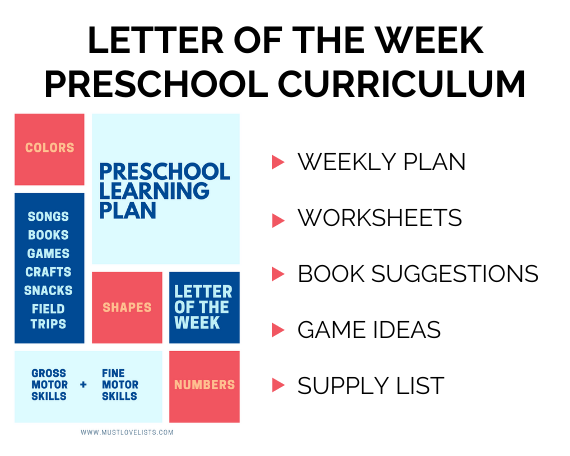
Preschool Learning Plan Tips
- Fun is number one. Don’t stress yourself or your kids out by trying to make them sit and listen to you talk for hours.
- Read together. Do this first and foremost. Talk about the pictures, read a variety of books, and play with silly voices, rhymes, and sound effects.
- Have a flexible routine. Get in the habit of doing preschool learning activities daily, or two days a week, or whatever works for you, but aim for some consistency. Just don’t hold yourself or your child to the routine with such rigidity that it ceases to be fun (see #1).
- Prepare in advance. I found it extremely helpful to have a plan, and to spend a little time on the weekend looking over my plan for the upcoming week. I gathered materials and sometimes did a little prep work for activities so my kids weren’t waiting 10 minutes for me to get my act together. A preschooler can wreak all kinds of havoc in 10 minutes!
- Pay attention to your child. Your child is a complex bundle of personality, emotion, learning styles, communication styles, and so many other things that go into how, when, and what they learn. You won’t regret learning as much as you can about what makes your child tick. Discovering what they get excited about and how they approach the world will allow you to encourage them to grow and learn to their greatest ability.
Free Printable Learning Plan Outline
You can download a free printable of this Weekly Preschool Learning Plan. This is an overview of 33 weeks worth of letters, numbers, colors, shapes, and topics. Check back for additional details of a daily learning schedule, activities, and resources…coming soon.



